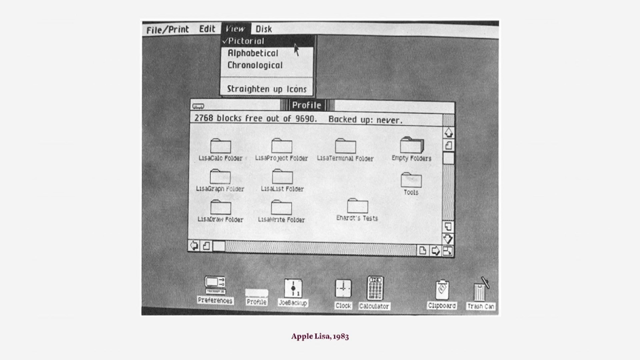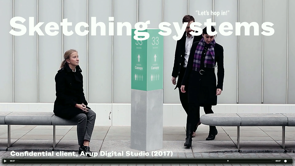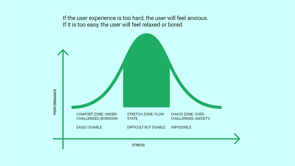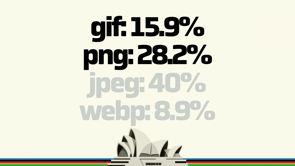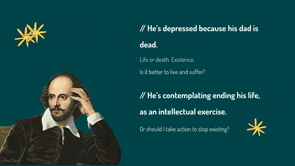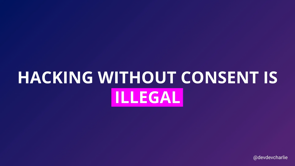Designing for positive social and environmental impact

Firstly, I'd like to acknowledge the Gadigal people of Eora Nation, the traditional owners of the land on which we are meeting today.
I pay my respects to elders past, present, and emerging and recognize the continuing connection and protection of country, waters, and culture.
I wanna start with a little bit about the Nook, which Oliver kind of slipped in there as well, which is we're a social enterprise, which means we're a for-purpose organization.
We're a crew of people with multiple skills who come together to work on projects and products to help governments make sense and be open, and make sure communities can get involved in the decisions that impact them.
We make what's known as civic technology.
It was 10 years ago that I first learned how important government procurement and contracts are in creating job opportunities for local communities and protecting our environment.
We made a short documentary to raise awareness for reuse and recycling social enterprises and explain their value to local councils.
There were some great success stories, but ultimately, government policies at a federal and state level failed to support a vibrant ecosystem of small local enterprises, especially in the electronic recycling sector.
Meanwhile, massive subsidies were being provided to mining companies to dig up more minerals to go back into landfills one day.
In 2020, we started working with the New South Wales Geoscience Information Program.
Simon Wright over in the corner was part of this team as well on producing a mobile Web app common ground.
It's a location service to help people find information about what mining, oil, and gas activities are happening across New South Wales and access information such as licenses and leases, and environmental reports.
It connects data from a number of sources and is designed for a community audience.
I introduced participant, your design to the New South Wales government at the time, and we took an agile approach to design and development, which back then was fairly new territory.
The background to this project was the existing systems were designed for industry; without the content, people needed to make sense of the data.
So a lot of the information was being misinterpreted, and it was generating a lot of concern within the community.
There was also a few New South Wales politicians being investigated for corruption.
They'd taken advantage of their privileged access to information about the location of resources and influenced planning decisions to make money for themselves and their friends.
Some companies had also not been doing any community consultation, nor had the industry been open about exploration processes and what the industry actually looked like.
Back then, some people in the government thought images such as this of a Queensland coal seam gas field were fake.
Like, it's was quite horrifying that they just didn't know what the industry actually looked like.
There was a lot of confusion.
The department was getting inundated with phone calls by angry people because existing websites weren't giving them the information they needed, and they were really struggling.
So the people and governments and the departments were really struggling to kind of understand what was happening as well, and community trust in the New South Wales government plum.
So we took a storytelling approach and introduced people to the process and what to expect at each phase and stage.
Common ground 10 years on is revolutionary and unique, in the words of our minister at the time.
This is how government should be open and transparent.
Everyone should have this, and we totally agree with that, which is why over the years we've been researching and developing ways to make this happen, not just for extractive industries.
But to bring data together for all kinds of projects, land uses for communities all over the world, so they can understand what's happening in their local areas.
This pathway is a broad interpretation of legislation and the process all companies had to go through to get an exploration license or lease to extract and produce resources.
It was a powerful engagement tool for us when we were there was over 200 people involved in the making a common ground.
So it was a really extraordinary process of getting everyone together to kind of get the information we needed.
It also helped us figure out how to structure the huge amounts of data that we had and that we kind of had to make sense of, so people in communities could make sense of it too.
The interactive version of this pathway explains more in depth but also gives links to information that people need when they need it.
The thing we really wanted to get across was when community consultation engagement was meant to happen, and when environmental reporting is happens as well, and when people can feed back on those environmental reports, which actually are the kind of, you know, go or stop for projects and a really important part of that process.
Sometimes it's years until people know what's being planned in their local area, and a lot of investment has been made.
So it, you know, there's, it becomes a big area of contention.
So this pathway led to policy changes.
The minister changed the process to make sure communities are involved earlier in the lounge, use decisions.
And so that's, you know, had kind of a bit of an impact on how things are done, so less emphasis on.
Companies who to do the engagement, it actually was the governments that were meant to be doing it.
So since then, we've also been developing collaboration tool to help everyone be open about their processes and visualize things like legislation, regulations, and project life cycles.
We worked with the Transparency International Australia on the Accountable Mining Program, which is a global program, creating the template for mapping the mining license processes for over 20 couontries.
The design process allows for industry, government, civil society, and communities to have constructive conversations about laws and regulations and how to improve them.
The pathways have been very helpful for government departments who don't really understand their own processes, and as our African colleagues said, the pathways create a shared understanding and deter conflict in places where conflict, you know, places where there's a lot of conflict and a lot of corruption in some of those governments.
In 2020, we're asked to create pathways for three parts of the Environmental Protection Biodiversity Conservation Act: the application assessment and approval process.
This legislation in particular was under, has been under scrutiny for failing to protect the environment.
Our research showed the issue is not only the law itself, people were getting the information or weren't getting the information and the data they needed.
So small businesses, residents, and farmers in particular struggled to understand the rules, can't find what species were in their area, or find what positive steps they could take to protect the environment.
The orange steps show where confusion happens, and these pathways have provided the foundation for the department to improve their content, data systems, and how they communicate, but also how to connect the systems between federal government, state governments, and local governments as well.
So this legis, oh, sorry.
That's me doing that.
This legislation constellation we produced is an example of how many complex laws and regulations some industries need to navigate.
There are over 2,500 oil and gas platforms in the Indo-Pacific region that will come to the end of their lives in the next 10 years.
These structures have been in the ocean for about 20 to 40 years.
An estimated 50 billion is needed to decommission platforms and pipelines in Australian borders.
Some companies that have been making money from extracting our resources and not covering the cost, so us taxpayers will have to.
We don't have access to their contract conditions, the deals governments have done, and the industry and Australian governments have only just started trying to figure out how to recycle this huge structure.
Information about how much has been earned in royalties and taxes is hard to understand, and what economic impact.
Not having this revenue, will have is also very hard to find.
So I'm on the steering committee to publish What You Pay Australia, which is a coalition of human rights, social justice, and transparency advocates, and I'd like to share this short video with you.
We have to phase out from burning fossil fuels in favor of clean energy sources.
So how do we make sure that energy transition benefits citizens in my country?
.......... It's to be much harder for countries that rely on oil and gas to adapt when fossil fuel demand inevitably falls.
Wealthier, higher emitting producer countries, should be the first to prioritize phasing out fossil fuels.
They need to provide the finance and technology to support the countries in the global south.....
So how do we avoid replicating the negative impacts of fossil fuel?
.......... It is bringing communities, experts, and campaigners together to ensure the community's rights over natural resources.
Energy transition is everybody's business, so we need to come together and begin to solve this problem.
Where there is unity there will be victory.
So Nook are also part of the global open government movement and community.
The Open Government Partnership has 77 national governments and 106 local members and brings civil society, public and private sector together to create action plans to improve people's lives and countries.
And the management of national resources, and to increase government transparency, accountability, and public participation in decision-making.
So Nook has been designing content pro bono to help raise awareness for open government here since Australia joined in 2015 under Malcolm Turnbull.
The current Albanese government plans to revitalize open government next year, and hopefully, they'll do better and be truly collaborative.
So, an international philanthropic foundation illuminates, sort out open government content; when I was in Senegal, they ended up giving us funding to kick-start research and design to create advocacy materials for financial transparency advocates all over the world.
So we call this product Making Open, and it's much more than just about transparency.
Our mission is to empower advocates and change makers in communities, governments, and companies all over the world.
To make the profound changes we need to heal our planet and societies, over a hundred advocates participated in research and contributed to the development of designs and content.
Making open has a content kit, a design and message library and story guides.
The kit is for people who don't have the time, skills, and resources to create the materials that they need or are looking for inspiration.
Making open will also be a channel for people to contribute their own images, designs, stories, messages reflecting their country, culture and context.
We simply explain some of the data, systems, and policies that need to be put in place to make transparency, participation, and transformation happen.
We're focused on positive messaging, narratives, and practical how-to stories.
Many people feel overwhelmed, especially young people, and so, through connecting these concepts and helping explain them and by sharing knowledge from an international community of change makers, we hope to influence and inspire and get more people confident to take action and progress changes in their organization and local communities.
We cover a wide range of topics, from following money and politics to data sharing to public participation in improving public service, design, and delivery and the systems that need to be put in place to prevent corruption and empower communities to participate in decisions, be heard, and be valued, and we plan to extend into other areas too.
There's a lot of existing material out there, and so, for champions and technical people and teams who are implementing data standards, there isn't a lot for people new to these concepts or people who are aware of them but need practical information about what to do next, and so that's kind of the gap that we are really filling.
We are creating workshops, learning and development pathways to help people understand or to help people, depending on where they are in their open journey.
So, a lot of new ministers, for example, or people like elected representatives get into government, they don't really know about this movement or some of the things that they need to be doing and advocating for whilst they're in government, let alone people in communities who can then advocate to their ministers.
So governments spend a lot of money.
Financial transparency is a foundation for good governance, and it's more than just the money.
It's understanding the processes, decisions; it's the deals, agreements, terms and conditions.
It's the information about the people behind the decisions, and also the company owners and who they're doing business with.
You know, are they good corporate citizens?
What are their political influencers and connections?
And knowing if there's any conflicts of interest.
So when we think about transparency, it's kind of, it's quite broad and contracts of the heart, at the heart of where the governments govern well and deliver value to communities.
And a lot of money and power given to big business and charities through procurement and grants.
There's a lot of decisions that have been made about us without us, and COVID really highlighted the importance of access to information about contracts and who governments choose to do business with.
And behind every contract is a policy, a procurement process, and a decision on what to spend money on with whom.
So being able to participate in shaping policies and decisions is key to improving social and environmental impacts, and procurement is a way that we can support local enterprises and small businesses and innovators as well.
So we've been developing a lot of these graphics, and we've also been using these currently in some of our advocacy work that we do been doing with government around sort of procurement processes and opening up data around procurement and grants but also about budgets and how budgets are formed as well, and who's involved in creating those budgets and where the local communities have been involved in deciding what gets spent in their local areas, so there's a piece of work that we're going to publish very soon about that.
So industry and businesses large and small are also increasingly expected to report on E S G performance, and many are still working out what that actually means and what they actually need to put in place to deliver environmental social and good governance.
So when we have funding to launch Making Open, we plan to extend this content, you know, extend the content for this purpose as well.
So I'll come back to the natural resource governance and what's happening, you know, in around the planet, and what's happening today, in particularly with the industry.
It's like finding information about land decisions and projects, whether they be mining, oil and gas infrastructure such as dams, railways, processing plants, or renewable energy projects, is hard to find.
This lack of information is not doing anyone any good and understanding the life cycle of all these projects is a worldwide problem for communities, governments, and it's not helpful when everyone is trying to grasp what to do for the energy transition.
The other thing we need to really consider is that in the rush to combat climate change, mining and processing, the critical minerals needed for renewable energies will put more and more pressure on the environment, water resources, and communities, especially indigenous communities, and especially protected areas.
It's estimated four times the amount of certain minerals will be needed to be extracted, and in some cases with other minerals, it's 50 times more are needed to satisfy this kind of burdening new industry.
The push for deep sea mining is a new challenge for countries and potential harm, and the New Zealand government just put a moratorium on it like we need to be telling our government, we need a moratorium as well, particularly in the Pacific Islands and around Papua New Guinea and where, you know, governments over there are trying to push this stuff through and industry is lobbying for this stuff to happen.
Many renewable companies are owned by fossil fuel companies; that's the reality.
You know, they're all kind of trying to transition as well, and so we need to make sure that we have transparency in renewables as well, so everyone can make informed and smart decisions, and we're not making the same mistakes that the mining companies had done in the past.
The life cycle of wind turbines is about 30 years; support for recycling Innovation in this sector is so desperately needed.
Otherwise, huge wind technology and solar infrastructure will continue to harm environments and pollute our planet in other ways while trying to save it.
To overcome these challenges, good policies and funding are needed to support small infrastructure, local innovation, and community enterprises to be part of this transition to, and we need to have a serious conversation about water.
It's the world's largest extractive industry.
Water licenses are extremely complex and opaque.
There's a lot of corruption in water, and there's a lot that happens that's, you know, really harming the environment.
Mining, fracking, agriculture use huge amounts of water, depleting and damaging aquifers, often leaving local and indigenous communities without access to clean water.
Manufacturing, food, and beverage companies have monopolies on water too.
No one really knows how much water hydrogen energy is going to need.
So, you know, this is another thing we need to consider in terms of the transition is like, where is all that water going to come from?
Particularly when there's so many areas of, you know, in drought, or you know, the water hasn't been managed in a way that it can be reused and recycled either.
And dams are not green.
They drown ecosystems, land, and culture, and they often displace people.
So we really need to think about, when we think about extractive industries, I, we just really need to think about water too.
So back to the positive, because that's what we are here to talk about, and, you know, we, as designers, we have the skills and the power to make physical and digital products humane, ethical, and ecologically safe.
We have the ability to embed openness, inclusion, and integrity in our systems and our processes, and in our work.
It's time to rethink human-centered design and move to ecological design, so we can create products, infrastructure, data, and technology to make our planet, environment, and communities healthier.
We can do this.
We can set up a better future for our next generations, and if we have the access to the information we need and all band together, we can make these changes happen.
So I hope this has inspired you to start thinking about how you and your organization might make a difference, and this is the beginning of the conversation, so I'd love to hear your thoughts and I think we've still got a little bit of time to be able to do that.
And also, if you wanna get involved in the work that we're doing, please reach out to me or follow.
Like, follow me on some of the socials.
But, you know, happy to have a conversation any time, and if you wanna support Making Open, you can head over to MakingOpen.org where you or your organ organization can make a tax-deductible donation to help us get to launch, and you can also sign up for updates.
So thank you!







